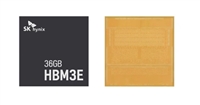Frequency Sensitive Relays
WILMAR™ Protective Relays – WOUF Series, Over/Underfrequency
Function: 81 O/U
• ANSI/IEEE C37.90-1978
• UL file No. E58048
• CSA file No. LR61158
The output contacts of frequency relays are ener-
gized when the frequency exceeds the adjustable
set point. Overfrequency and underfrequency re-
lays are available in 50, 60 and 400Hz. Combination
over/underfrequency “band pass” relays are also
available. These are energized at rated frequency
and de-energized during overfrequency or
underfrequency conditions. Frequency Differential
relays are energized above the preset frequency.
The pick-up and drop-out frequency settings are
independently adjustable.
3
Operation:
The relay will energize at normal frequency; The
normally closed contacts will open and the normally
open contacts will close. The relay will drop-out after
time delay at overfrequency or underfrequency.
Typical Curves (WOUF Series)
90
11
/64" DIA.
4 MTG. HOLES
80
Note: Dimensions in inches. Multiply values by 25.4 for dimensions in mm.
PART NUMBER SELECTION
Time Delay
70
60
50
40
30
Standard Time Delay
A minimum, fixed inverse time delay is incorporated in
all frequency relays to prevent nuisance tripping and is
represented by the typical curves shown below.
Adjustable Time Delay
If additional time delay is required, a suffix "T" must be
added to the part number. This allows the minimum
fixed time delay to be field-adjustable up to 20 seconds
PRODUCT SPECIFICATIONS
WOUF Series
Part Number
0
1
2
3
4
5
6
Drop-Out Time Delay
Nominal Voltage (±20%) .................
Nonimal Frequencies .......................
Trip Point ..........................................
120, 230, 380 and 460 volts
50, 60 and 400 Hz.
PART NUMBER SELECTION
Sample Part No.
Type:
WOUF-12-5060-T
Screwdriver adjustable. Adjustment range in
accordance with ordering information.
WOUF = Over/Underfrequency
Input Voltage (VAC)
12 = 120
-40oC to +65oC
Operating Temperature ....................
Differential ........................................ The frequency pick-up to drop-out differential is .5% max
23 - 230
38 = 380
Voltage Drift .....................................
± 0.05% maximum frequency error for input voltage
variation of ±10%
46 = 460
Frequency Range
UF Adj.
OF Adj.
See Time versus Frequency curves
In compliance with C37-90B ANSI/IEEE
One set N.O., one set N.C.
Time Delay ........................................
Surge Withstand Capability .............
Output Contacts ...............................
50 =
60 =
40-50 Hz 50-60 Hz
50-60 Hz 60-70 Hz
400 = 350-400 Hz400-450 Hz
Time Delay Options
5 amp resistive at 120 VAC or 28 VDC
Contact Ratings ................................
blank = Per Time Curve
T = Adjustable
Notes:
1.
2.
3.
Remove black screws for access to the frequency and the time adjustments.
Clockwise rotation of the frequency potentiometer will raise the frequency trip point.
Clockwise rotation of the time adjustment, option "T" will increase the drop-out time delay.
Consult factory for additional models.
4 0
Tyco Electronics / www.tycoelectronics.com / Factory Direct Technical Support: 800-253-4560, ext. 2023 (U.S., Canada, Mexico) or 805-220-2020, ext. 2023 (International)










 塔塔电子与力积电达成技术转让协议,携手建设印度首座晶圆厂
塔塔电子与力积电达成技术转让协议,携手建设印度首座晶圆厂

 英特尔震撼发布:128核心256线程的至强6性能核处理器
英特尔震撼发布:128核心256线程的至强6性能核处理器

 SK海力士量产12层HBM3E,容量高达36GB
SK海力士量产12层HBM3E,容量高达36GB

 意法半导体传感器驱动Sphere,开启沉浸式电影新时代
意法半导体传感器驱动Sphere,开启沉浸式电影新时代
